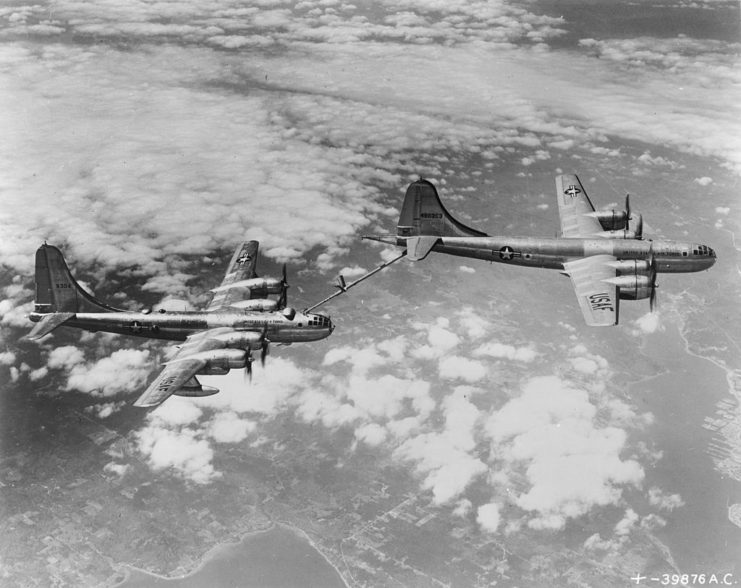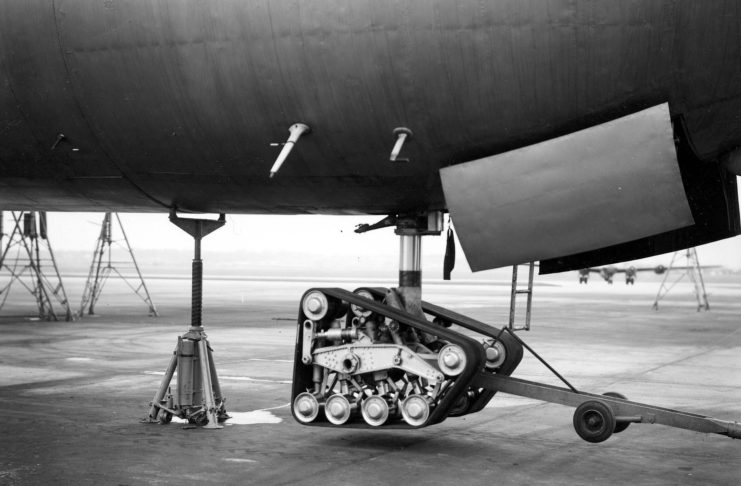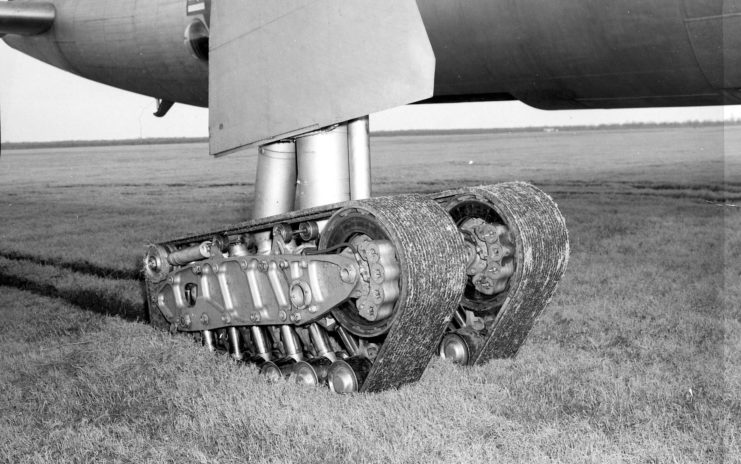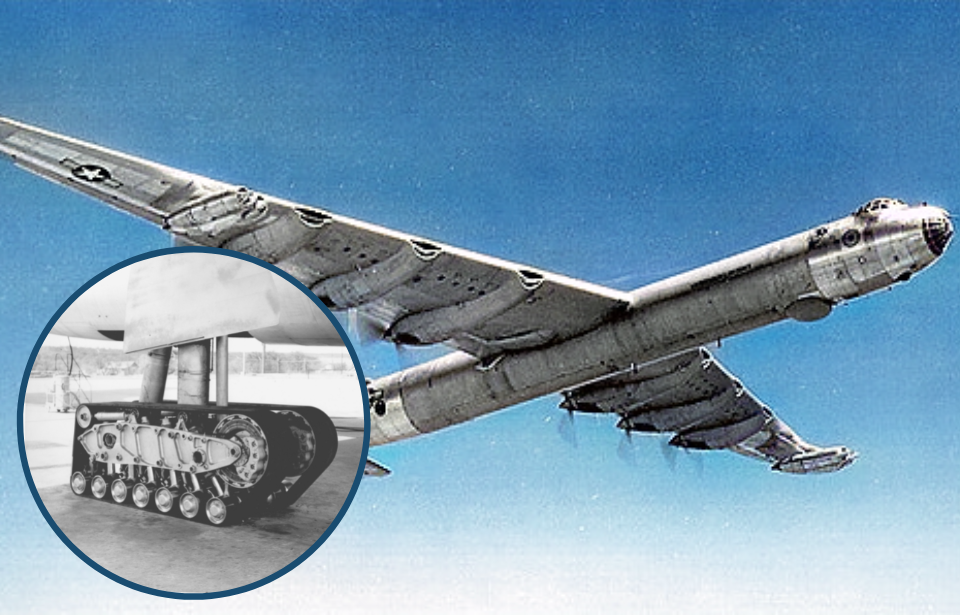Tanks are invaluable military assets, as are heavy bombers. Combining the two should be a winning combination… Right? As the US Air Force learned, the answer is no.
During the Cold War, the service tried replacing the landing gears on some aircraft with tank treads to better disperse the weight of the planes upon landing. The hope was that, if it worked, there wouldn’t be a need to build reinforced runways to accommodate these heavy bombers. Tests began on smaller aircraft, before attempts were made with some of the biggest in the US fleet: the Boeing B-50B Superfortress and the Convair B-36 Peacemaker.
Development of the track landing gear
In 1944, Military Requirement A-1-1 called for “a new type of airplane landing gear effecting maximum practicable weight distribution.” The aim was to eliminate the need for long, reinforced runways and to ensure operations could be conducted on rough terrain.
The development of track landing gear was actually first proposed in the late 1930s by J. Walter Christie, inventor of the Christie M1931, and the Dowty Equipment Corporation. After work on the proposed design was completed, the landing gear for the test aircraft were created by two companies. Firestone created the nose gear, while Goodyear created the main one.

Neither of the designs were very successful and problems arose almost immediately after the tank treads were installed on the B-50B. The bomber was a variant of the Boeing B-29 Superfortress, which was used during the Second World War. The B-50A was the first version contracted by the Air Force at the end of the conflict, and the B-50B, the next iteration, was the bomber chosen to test with track landing gear. It was much heavier than the B-50A, and primarily used for reconnaissance.
Performance of the B-50B Superfortress
The main gear not only interfered with the B-50B’s gunnery pattern, but could only be used up to a speed of 70 MPH. Even if the bomber could get off the ground, the nose gear was deemed unusable for flight testing. This meant the B-50B initially only tested the landing gears by taxiing behind a tow truck.
The aircraft was eventually cleared for a test flight in 1949, which was “satisfactory.” However, there were no further tests done on the bomber, due to the level of maintenance required and issues with bearing failures. This led the Air Force to focus its attention on adding the system to a different aircraft.
Track landing gear and the B-36 Peacemaker
Despite all of the issues with the B-50B Superfortress, the Air Force decided to test the track landing gear on the B-36 Peacemaker, as it was the largest aircraft flown by the service at the time. The initial goal of the strategic bomber was to travel long distances while conducting air raids over Japan during the Second World War, but it wasn’t completed in time.

The B-36 was seen as an ideal option for nuclear strikes during the Cold War, but its weight was an issue. It had a maximum takeoff weight of 409,996 pounds. Fully armed, the bomber was so heavy that it could sink into the concrete of an airstrip if left for too long. There also weren’t many fortified airstrips in the US that could handle the takeoff run of such a heavy aircraft.
Ending the program
The only test flight conducted with the bomber, the XB-36 variant, was on March 26, 1950. The aircraft took off, did a small lap around the airfield and landed. The landing gear caused the takeoff to be very rough and loud, and left a trail of parts down the runway upon landing.

